Hi there! Are you crazy in love? Are you looking to put a ring on it? Have you said ‘yes’? Perhaps you’ve been dreaming of a halo?
Never wanting to disappoint, this post will be jam-packed with all the information you need in order to choose the best halo setting for your dream diamond. So, pour yourself a large glass of lemonade,
and let’s work it out together.

Queen Bey Will Guide Us
What is a Halo Setting?
A halo setting is one of many types of ring settings that your diamond will live in while it sits pretty on that finger. It’s called a ‘halo’ style ring because, unlike the classic diamond solitaire, this particular setting has a circle of teeny tiny diamonds that form a ‘halo’ around the center stone (as adorable as ‘teeny tiny’ diamonds sounds, the actual term for these diamonds are ‘melee’ diamonds).
When a number of these melee diamonds are placed in formation together, it’s referred to as a ‘pavé’ style/detail. In the photo below for example, the halo is made up of lots of melee diamonds with a ‘pavé’ detail around that beautiful centered stone. All in all, I’m obsessed:
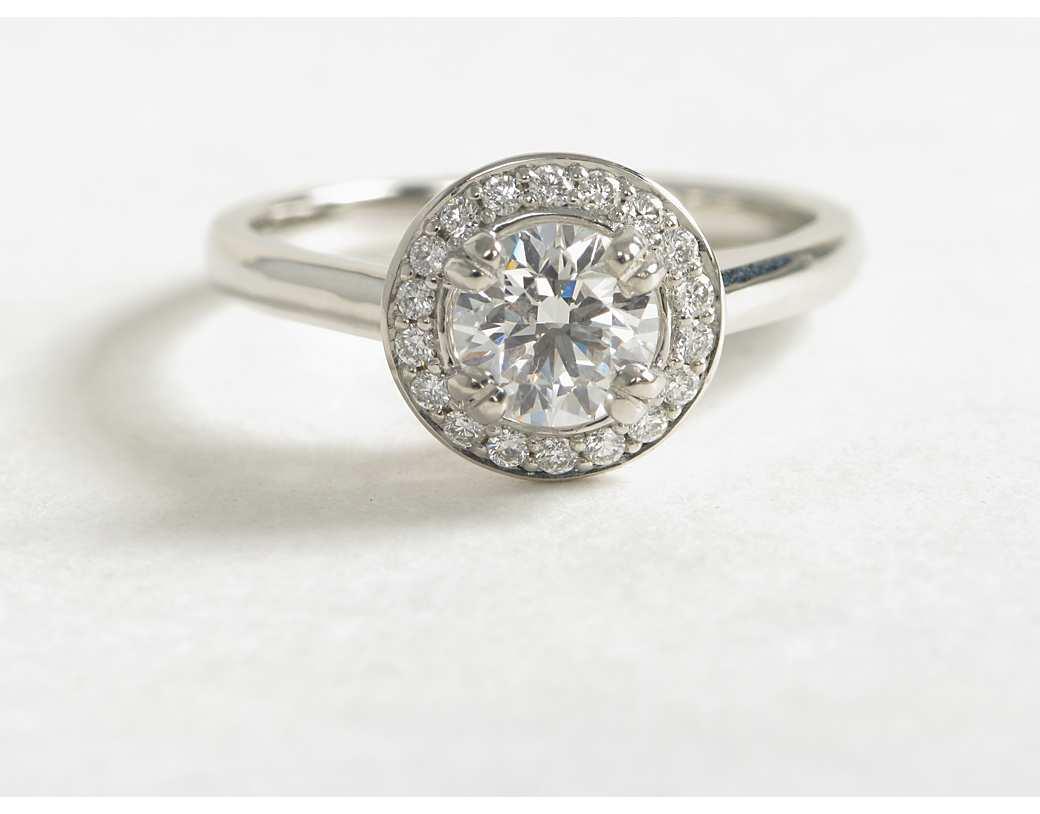
“Halo? It’s Meeee”
Halo settings didn’t always look exactly like this however. In Edwardian times when they first became popular, halo ring settings would usually have larger stones circling the center stone rather than the tiny melee you see above.
By the 1920’s though, the most popular halos were those with melee diamonds in the setting. In fact, in the 1920’s peeps went absolutely loco for the halo setting. If there was space for another mini diamond anywhere at all on a ring, then gosh darn it was gonna have it. In a totally unrelated turn of events (*cough*), the end of the roaring 20’s saw a massive financial crash and the beginning of The Great Depression. OTT diamond rings were swapped for… well, depression.
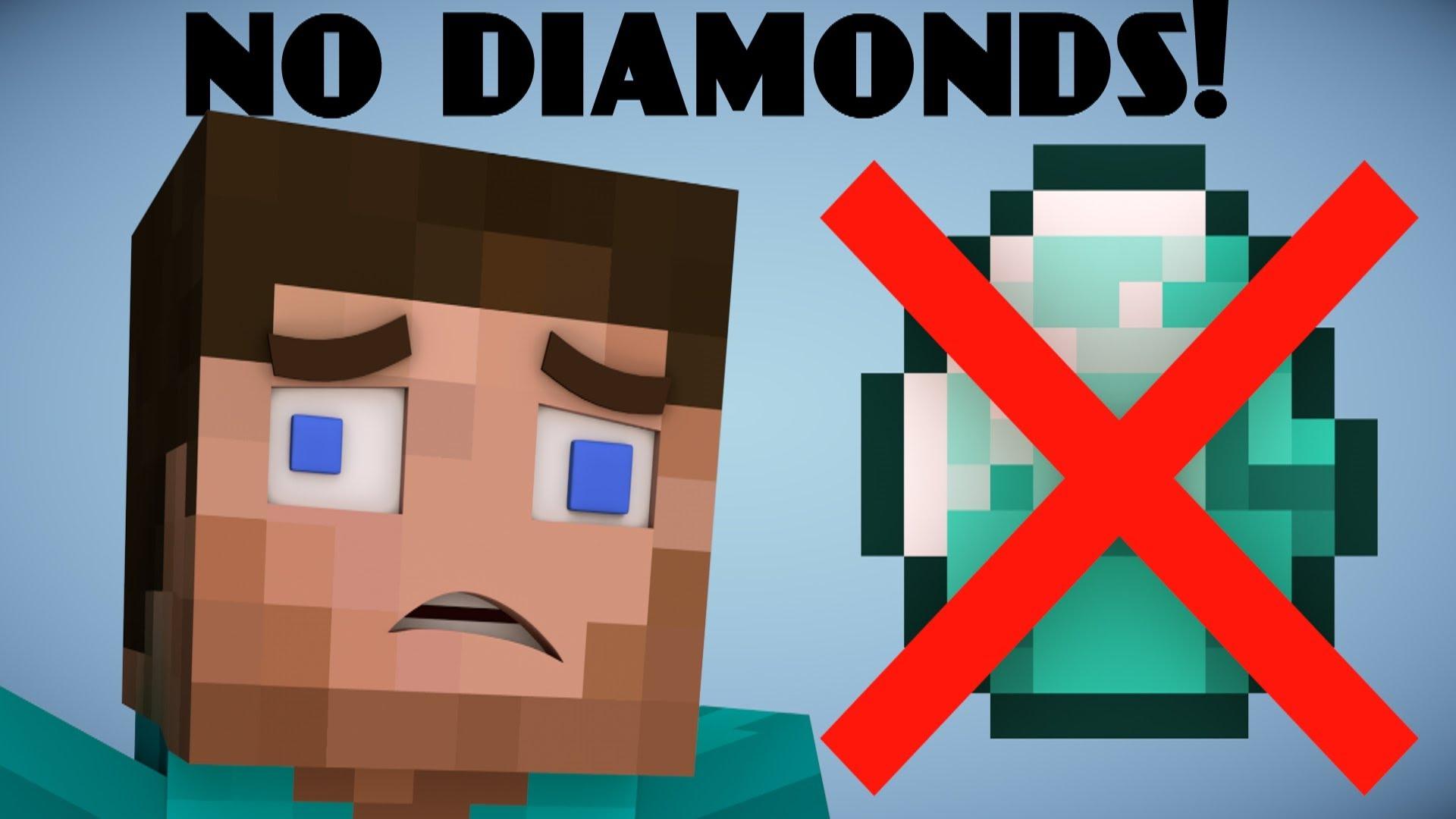
Luckily for us, halo diamond rings are back in vogue in a big way! Hurray! I personally love halo settings, and I actually chose one for my own e-ring. Here’s why:
- The halo makes my center stone look XL (no braggies or anything… *hair flick*). If you want to save some $$$ on the center stone but still have a fab ring, then a halo may be for you.
- I went for pave setting in the halo and along the ring band itself (which is known as the ‘shank’ - a ridiculous and hilarious name for it in my opinion but I digress), and that has made the ring insanely sparkly even from the side view. It’s dramatic and bold, and I am still in love.
- Not only does is look fierce AF, but the halo also helps to keep the center stone secure when I inevitably bang it of stuff at least three times a day.
Halos are not all fabulosity, however. You need to be aware that those little melee diamonds have a habit of falling out. That said, I’ve had mine for three years and everything is perfect, but it can happen and it means a trip to the jeweler for you to get the rogue stone replaced.
One easy way to avoid this is to steer away from getting that pavé detail the whole way around the ring, as that is where you are mostly likely to lose them. Another way to avoid it is to not bang it of stuff at least three times a day.
Things to Consider When Choosing a Halo Setting:
First and foremost, what type of center stone are you going for? My advice is not worry too much about the shape of the diamond (e.g. round, emerald, princess, cushion) because all shapes look fantastic with a halo, but instead be aware of the size of the center stone itself.
Of course, if you’re looking for a massive statement ring to knock some socks off, then go for that huge diamond and add a halo too, you crazy minx. If not, you might want to keep it in the “what a stunning piece of art” realm rather than “that 100% came out of a Christmas cracker” realm. Just a thought.
To do this, find out your finger size and see what different carat sizes look like on it (our ring viewer can help), taking into consideration what the halo will add on once it’s set. If you think it might look a little OTT for your taste, reduce the carat size or ditch the halo, thus avoiding any ‘novelty ring’ situation…
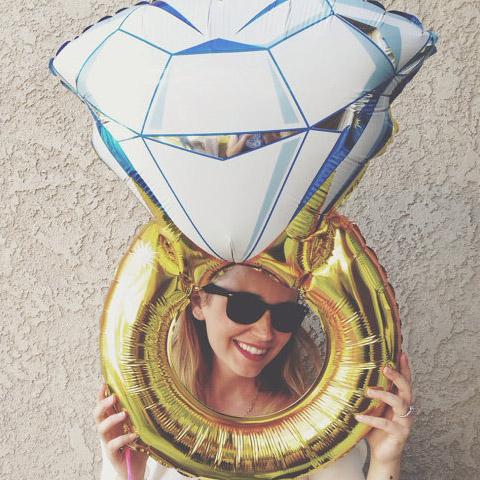
“It's Real, I Swears It!”
Next thing to consider is how elaborate you want that halo setting to be…

There’s no science coming. I’ve just been wanting to use that meme for so long and I decided that it was now or never. OK back to halos. Did you know you can have more than one halo? MIND BLOWN. Double the halo, double the wow:
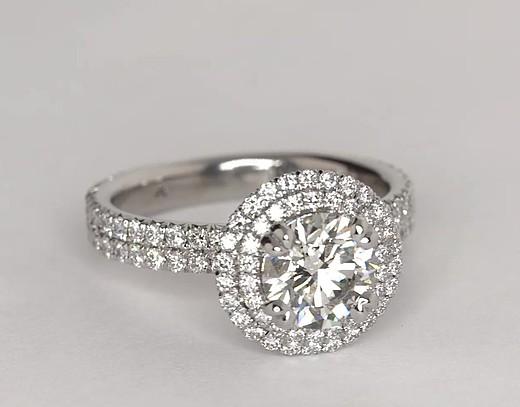
Wouldn't Say No
Now, having more halos sounds great right? Hold your horses. Sometimes things can get… how can I say this… a bit much. Feast your face on this:
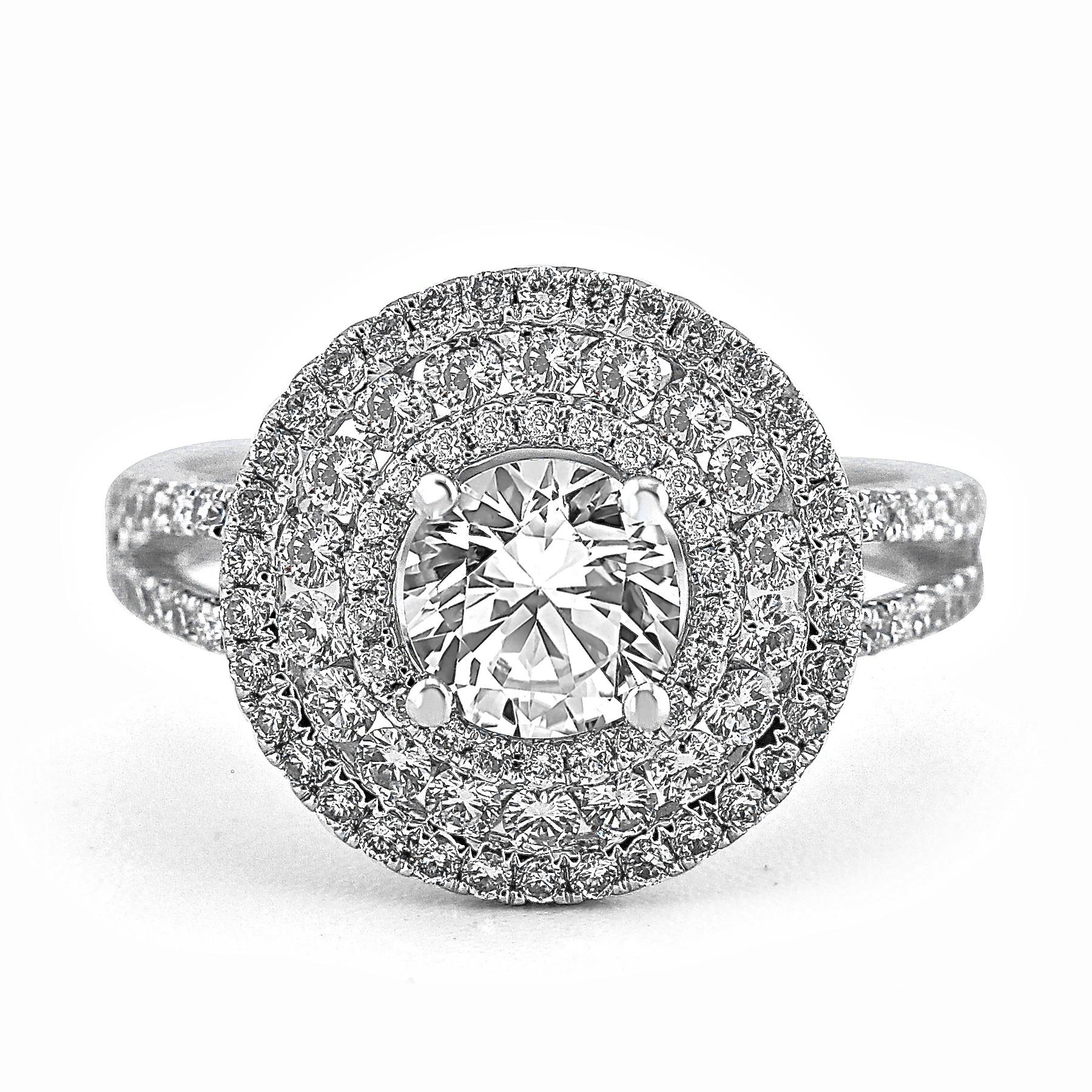
I'd Have to Say No
If you want three halos girlfriend/boyfriend, you go for it. Ignore me and my rubbish jokes. But just be careful that you don’t pull the eye away from that center stone - it could get hidden in all that halo (distr)action.
Next**.** Do you want a flush halo or a floating halo?
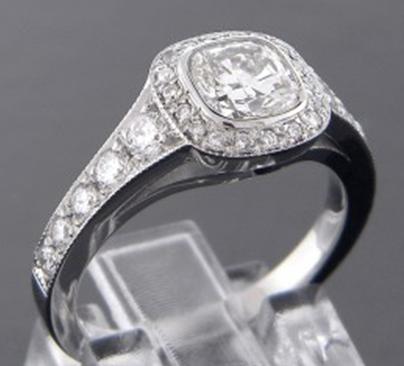
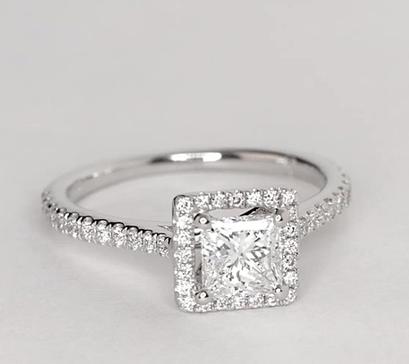
The ring on the left is a flush halo setting, meaning the center stone is - yes you’ve guessed it - flush with the halo itself. The ring on the right is a floating halo, meaning the center stone is held apart (and usually slightly above) the halo by the prongs. This creates what some jewelers call an ‘airline’, and that’s just a fancy way of saying that there is space between the surrounding halo and the center stone.
The style you choose is completely up to you, but bear in mind that some flush halo settings can get in the way of a wedding band if there is not enough height between the shank (around your finger part) and where the main diamonds sit on top. Ask whoever is making the ring to leave enough room for a straight wedding band underneath – or go for a bespoke curved wedding band like a BOSS.
On the other hand, a floating halo can mean a very high setting – i.e. the ring will sit much higher up off your finger. This can look stunning, but can also get caught in things or worse, scratch stuff/yourself/others. This is not merely a ring… it’s a weapon.
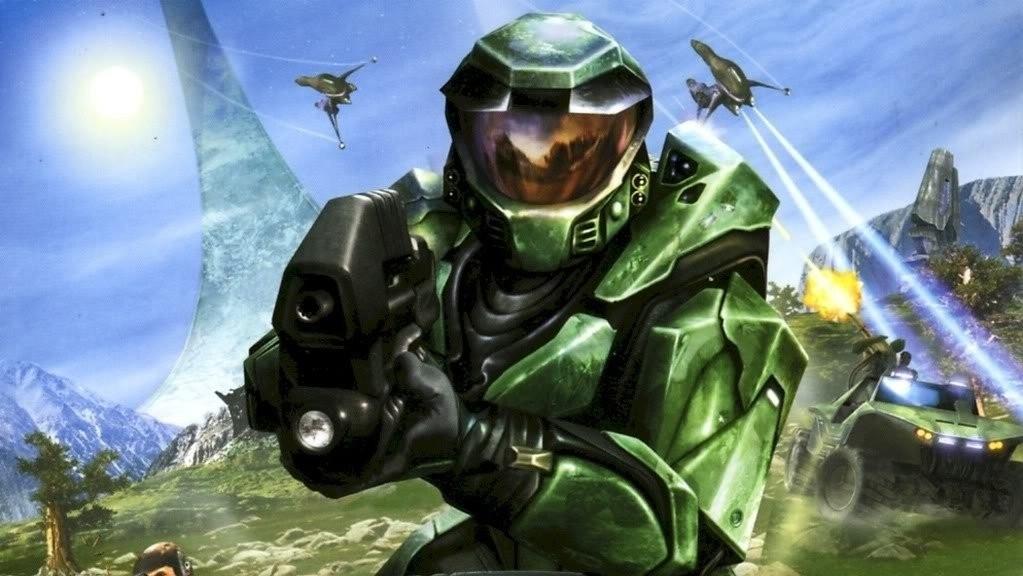
Say Halo to my Little Friend
Can we all pause just a moment to marvel at the layers of funny in the above joke? OK great.
NEXT. Do you want a prong or ‘bezel’ style setting to hold that center stone in place? (YUP. Halos are complicated, sorry buddy). This actually sounds more complicated than it is though, for realsies. The prong style is simply when little metal nodules or claws hold the stone in place, just like in this easy-to-understand image I am providing for you because I like you and want you to know what you are buying:
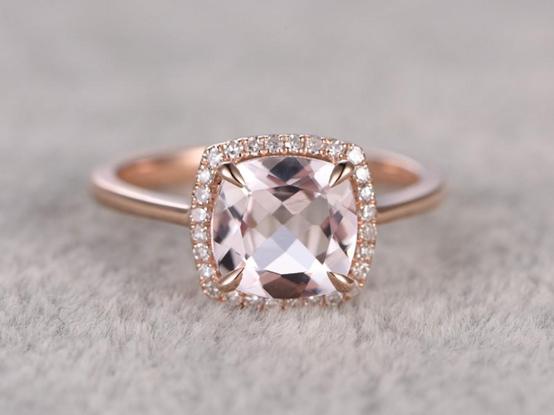
See those Four Pointy Prongs? Hell yeah You Do.
Bezel-style is just a different way of holding the center stone in place. Instead of prongs, it has a pretty band of metal that sits between the center stone and the halo. SIMPLE!
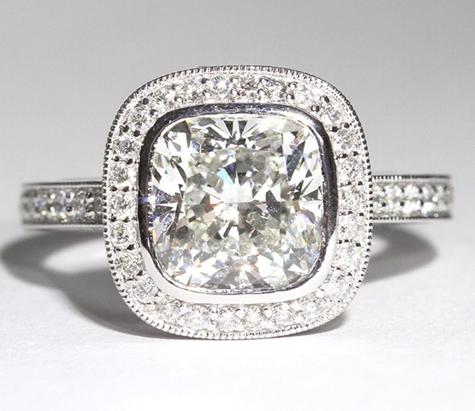
Nothing 'PRONG' Here Folks!
[SIDE NOTE: _See those tiny little dotty-type things along the edge of the outside of the halo and along the shank? That’s a detail called ‘milgrain’. It’s there to add extra detail and looks really lovely on a halo ring. Just FYI. It’s not necessary for a stunning ring though, as our ‘prong’ example above shows_]
OK, I promise I’ll leave you alone after this final quick point about halos: the choice of metal(s). You can go for a white gold/platinum setting (like most of the examples I’ve shown above), or you can go with a yellow or rose gold setting (go back to our ‘prong’ example above for a delightful rose gold halo setting). You can even mix metals on a halo, and it can look super flash, like these bad girls:

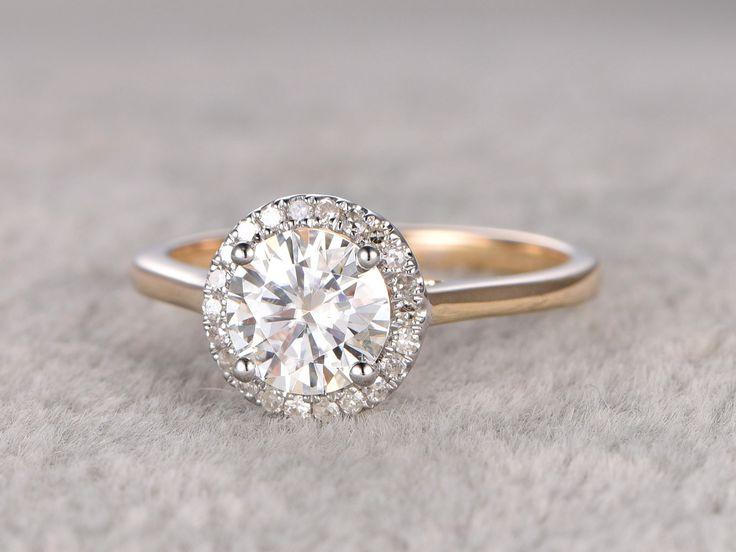
Both of these are divine and I want them. Just bear in mind that white metal will enhance any yellowish color in a diamond whereas yellow gold will mute it (#trickofthetrade).
Now, I promised I would leave you alone and I will. But first, let’s reflect a bit. Look at all the fancy terms you’ve learned today? Melee. Milgrain. Bezel. Shank. Pavé. If you’re partner ever says to you “I would love a flush-set double halo diamond ring with pavé and migraine detail along the shank”, you can be like, “I GOT YOU”.
You’re basically an expert now. You deserve a drink.

Halo, Bey Bey.

